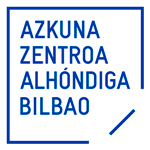
Bilbao, 1968. He has received awards such as first place at the New Note International Contest (Croatian Radio and Television Symphony Orchestra, 2018), Second place in the RED NOTE Composition Competition at Illinois State University Symphony Orchestra, Honourable mention at Lutoslawski Award (Warsaw, 2017), Winner at the 10th Edition of the A.E.O.S.- BBVA Foundation Composition Award (Spanish Association of Symphonic Orchestras), finalist at the Prokofiev International Composition Competition (Saint Petersburg, 2008), etcetera. He represented Spain in the World Music Days I.S.C.M. 2009 (Sweden). He has composed the soundtrack for the short film of the Gesamt 2012 project of the Danish director Lars Von Trier.
His works have been interpreted by the Swedish Radio Symphony Orchestra (Sweden), National Orchestra of Lorraine (France), St. Petersburg Symphony Orchestra (Russia), National Orchestra of Spain, RTVE Symphonic Orchestra, Symphonic Orchestra of Bilbao (BOS), Symphonic Orchestra of Barcelona OBC, among others.
Share:
The project consisted in the composition of a work of Chamber Music with the objective of exploring sound spatialization using a contemporary language, but, as a starting point, taking the works of polychoral music composers of the 11th and 12th centuries tied to Rome. Such compositors were Orazio Benevoli (1605-1672) and Giuseppe Ottavio Pitoni (1657-1743). Both developed their polychoral music technique by relocating sources (chorus’ and instruments) to create new sound effects, making the most of the architectural features of the Churches of Rome in which they worked as masters of chapels. That is how Benevoli did that in the Roman churches of S. Luigi dei Francesi and Sta. Maria Maggiore. Pitoni did the same in the Basilica of S. Marco Evangelista al Campidoglio (Rome).
1.- Research was carried out of the Roman churches S. Luigi dei Francesi, Sta. Maria Maggiore, Basilica of S. Marco Evangelista al Campidoglio and the Church of San Pietro in Montorio in order to know their acoustic characteristics.
2.- For the study of the polychoral works composed by G. O. Pitoni y O. Benevoli it became necessary to consult some of their scores in the library of the Academy of Santa Cecilia in Rome.
3.- From the results of the research work a composition of the chamber music was carried out, employing the technique of the polychoral music relocating sources (instruments) to create surrounding sound effects following the example of the mentioned Barroque polychoral works that used the technique “coro spezzato”.
Characteristics of the composed work:
Ensemble: flute, clarinet, violin, cello, and piano
Duration: 15 min
Recreation of sound effects (echo, reverberation) without electronics
Spatial arrangement: the 5 instruments are located far from each other throughout the enclosed area, with the piano in the centre and the other four instruments in the four corners of the space, developing antiphonal passages and sound spatialisation.
4.- Apart from the inaugurating score that I composed, during my stay at the Spanish Royal Academy in Rome and with the purpose of them being interpreted in a concert, I also prepared an arrangement for a chamber group for the following works by the mentioned Italian Barroque composers who practiced the same techniques of sound spatialisation, specifically Cantate Domino and Vias tuas, Domine by Giuseppe Pitoni and Hodie completi sunt by Andrea Gabrieli.
My stay as a grant holder in the Spanish Royal Academy in Rome gave me the opportunity to meet other residents in stay who were composers in other Academies such as Villa Massimo, Villa Medici, etc., and in whose exhibitions of their works (Open Studios), we could see the development of their compositions.
I could also enjoy the programmed concerts of different academies that covered music from classical and contemporary to jazz (Historic Institute of Austria), as well as being able to attend the musical programming of the auditorium seasons such as the Parco de la Música.
Apart from the previous, my two-month stay at the Spanish Royal Academy in Rome allowed me to go to many museums in Rome without haste (Galleria Borghese, Palazzo Doria Pamphilj, Palazzo Barberini, Museos Capitolinos, Museos Vaticanos, Castel Sant’Angelo, Museo Nazionale Romano, Palazzo Massimo alle Terme, etc.). The discovery of some of the exhibited works there may serve as a beginning point for new creations and a project.
